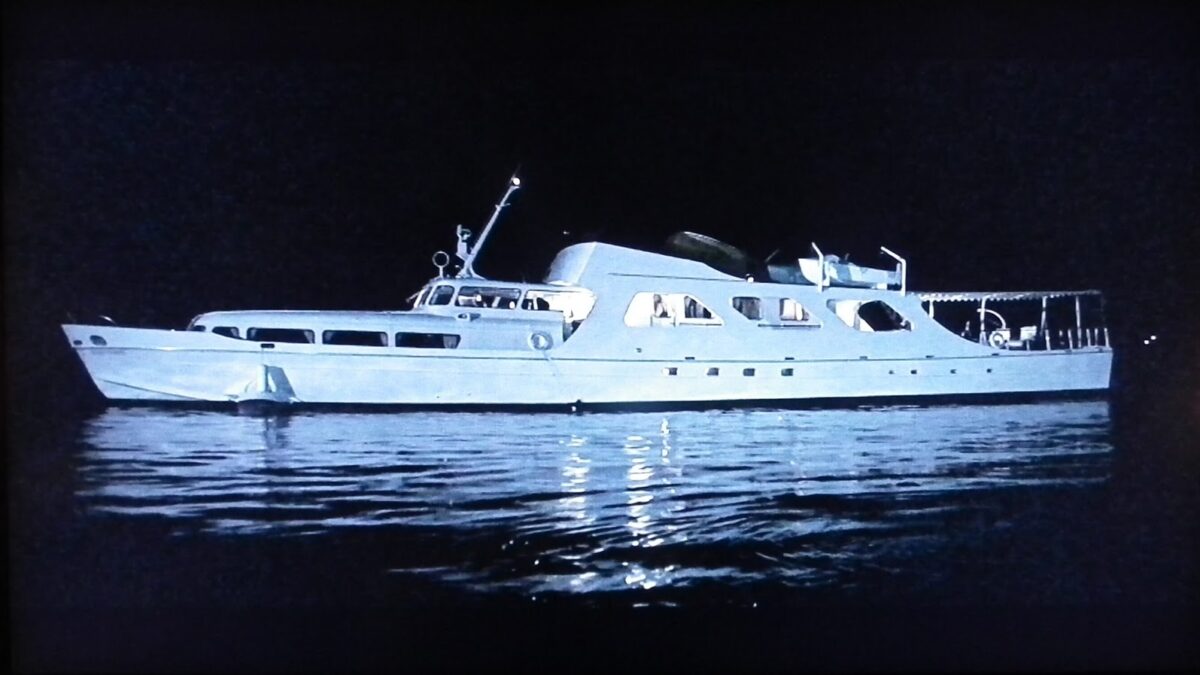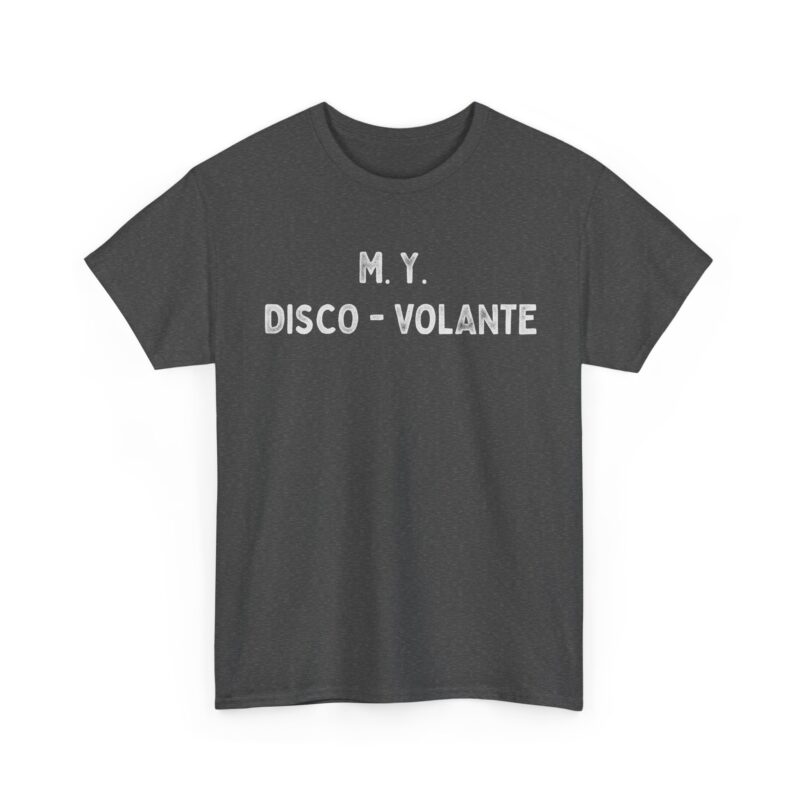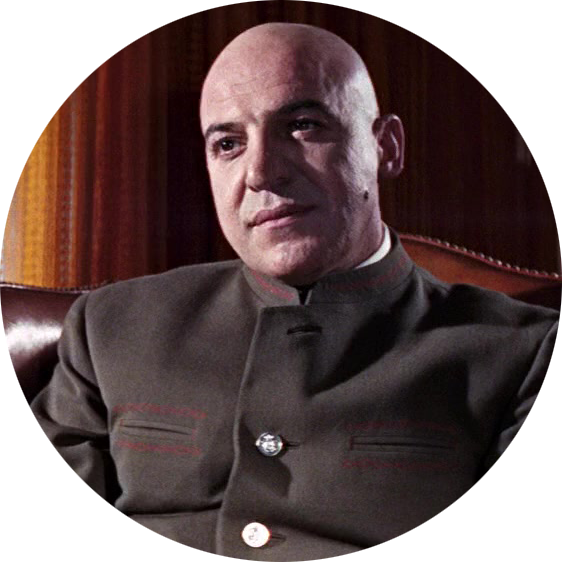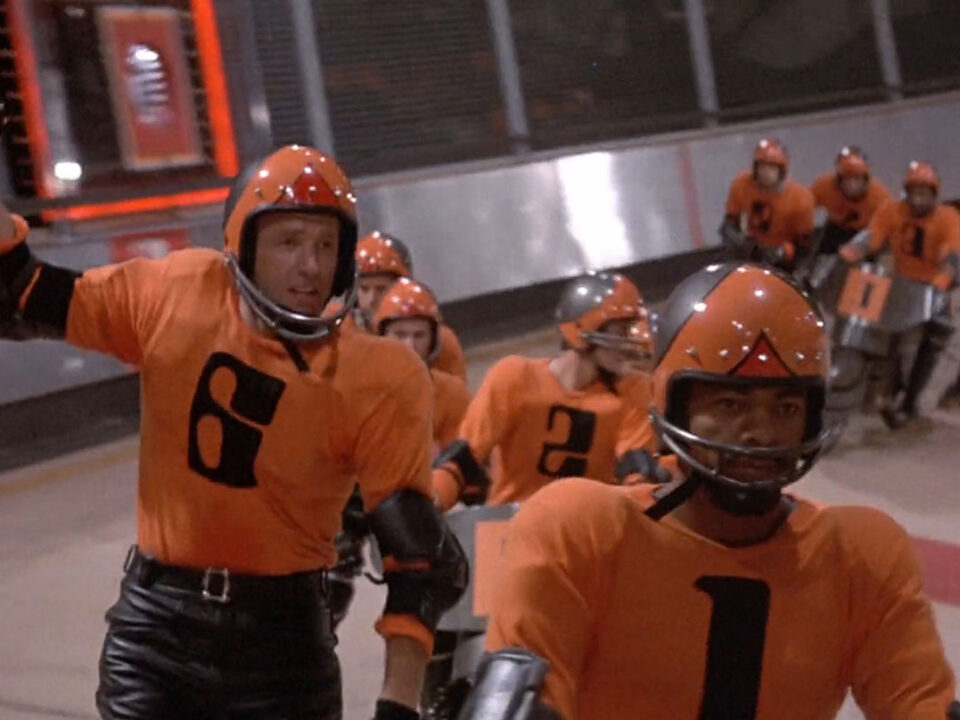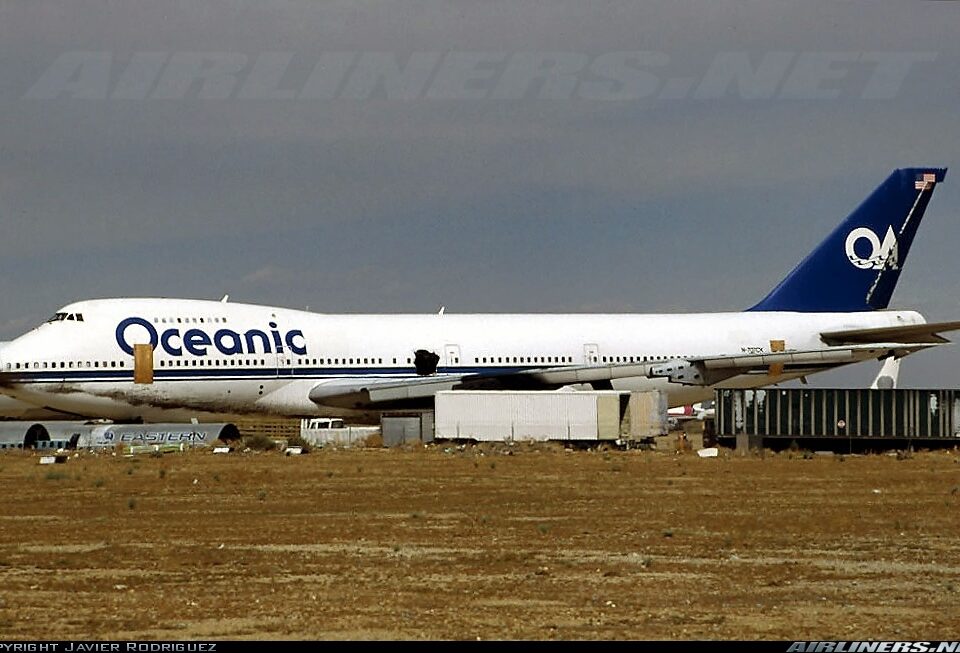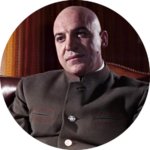
On Her Majesty’s Secret Service
June 28, 2024In the world of James Bond, few vehicles capture the imagination quite like the Disco Volante, the sleek and sinister yacht featured in the 1965 film Thunderball, the fourth installment in the iconic 007 series. Owned by the villainous Emilio Largo, SPECTRE’s Number Two, this high-tech hydrofoil yacht is more than just a luxurious vessel—it’s a pivotal element in the film’s plot, serving as a floating fortress for a nefarious scheme involving stolen nuclear warheads. Let’s dive into the fascinating story of the Disco Volante, its role in Thunderball, and some intriguing movie trivia that brings its cinematic legacy to life.
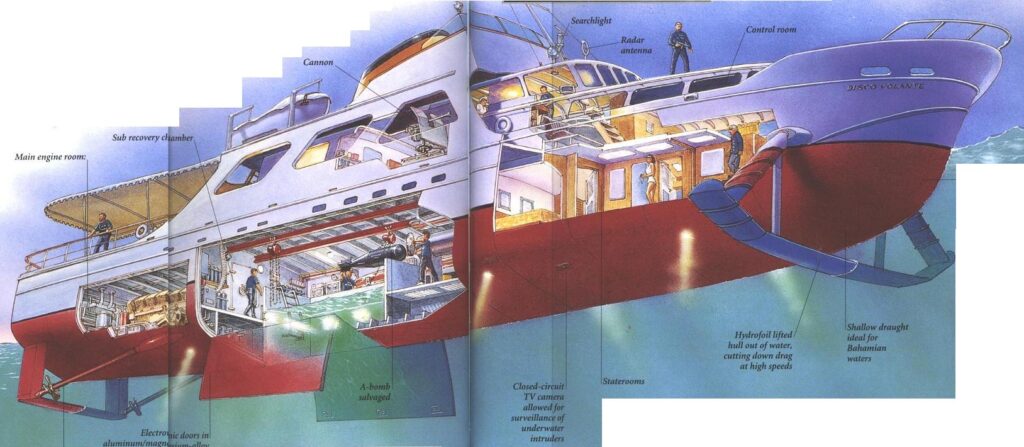
The Disco Volante: A Yacht with a Deadly Purpose
In Thunderball, the Disco Volante (Italian for “Flying Disc” or “Flying Saucer”) is introduced as Emilio Largo’s personal yacht, anchored off his lavish seaside villa, Palmyra, in Nassau, Bahamas. Far from a mere pleasure craft, the yacht is a technological marvel purchased with £250,000 of SPECTRE funds. Its sleek design and advanced capabilities make it the perfect tool for Largo’s mission: to transport two stolen NATO nuclear warheads as part of a £100 million extortion plot against the world’s powers.

The Disco Volante is no ordinary yacht. In Ian Fleming’s 1961 novel Thunderball, it’s described as a hydrofoil craft built by Leopoldo Rodrigues of Messina, Italy, with a hull of aluminum and magnesium alloy, powered by twin Daimler-Benz four-stroke diesels supercharged by Brown-Boveri turbo superchargers. Capable of reaching speeds of 50 knots with a 400-mile cruising range, its shallow draft was ideal for navigating the Bahamian waters. In the film, the yacht’s high-tech features are amplified, including an underwater hatch (or “moon pool”) for covert diver access and the ability to split into two parts: a luxurious rear “cocoon” and a high-speed hydrofoil front for rapid escapes.
The yacht’s dual nature—part opulent cover for Largo’s billionaire persona, part operational base for SPECTRE’s scheme—makes it a standout in the Bond franchise. Its crew, sporting shirts emblazoned with “M.Y. Disco Volante” (Motor Yacht), further cement its iconic status.
Role in Thunderball
The Disco Volante is central to the plot of Thunderball. After SPECTRE hijacks a Vulcan bomber carrying two nuclear bombs, the Disco Volante serves as the rendezvous point. Frogmen use its underwater hatch to recover the warheads from the sunken aircraft, storing them aboard before moving them to a hidden atoll. Later, as James Bond (Sean Connery) uncovers Largo’s plan, the yacht becomes the stage for the film’s climactic battle.
Bond infiltrates the Disco Volante by posing as one of Largo’s men, but he’s discovered and trapped in an underwater cave. After escaping, he joins forces with CIA agent Felix Leiter and the U.S. Coast Guard to pursue the yacht. In a desperate bid to escape, Largo jettisons the rear “cocoon” (revealed as an armored battle station with an anti-aircraft cannon and machine guns) and flees in the hydrofoil section. Bond boards the hydrofoil, engaging Largo in a brutal fight. With the steering jammed and the yacht at full speed, Domino (Claudine Auger), freed by nuclear physicist Ladislav Kutze, kills Largo with a speargun, avenging her brother. Bond, Domino, and Kutze leap from the Disco Volante moments before it crashes into rocks and explodes in a spectacular fireball, thanks to experimental rocket fuel.
Behind-the-Scenes Trivia: Bringing the Disco Volante to Life
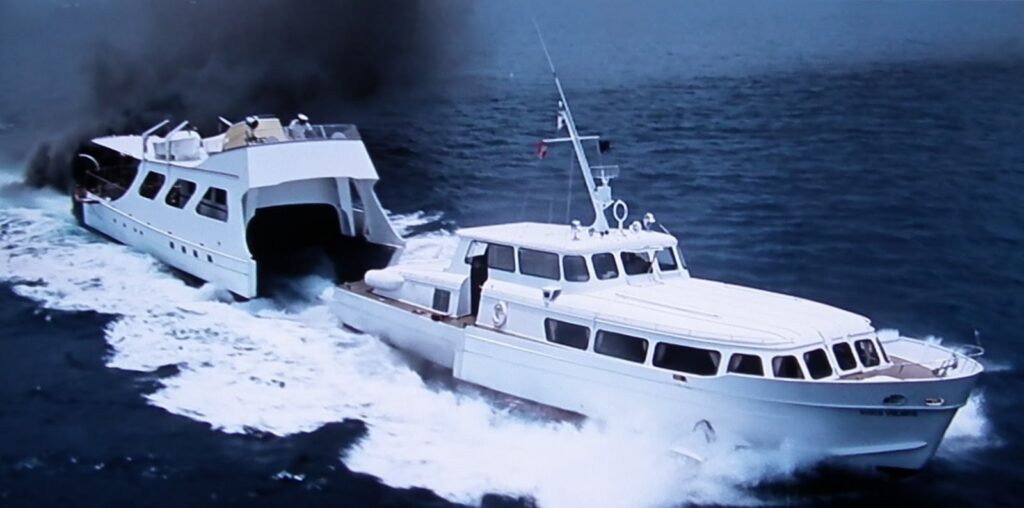
The Disco Volante wasn’t just a fictional marvel—it was a real vessel, creatively adapted for the big screen. Here are some fascinating pieces of trivia about its creation and role in Thunderball:
- A Real Hydrofoil with a Custom Cocoon
The Disco Volante was based on a real hydrofoil ferry called The Flying Fish, built by Rodriquez Cantieri Navali in Messina, Italy, the shipyard behind the world’s first commercial hydrofoil, Freccia del Sole. Purchased for the film for $10,000 in Puerto Rico and refitted in Miami for a total cost of $500,000, the vessel was modified with a 50-foot “cocoon” (a catamaran section) attached by slip bolts to create the illusion of a luxury yacht that could split apart. Production designer Ken Adam, who spent four months designing it, noted that no yacht at the time could travel at 50 knots, making the combination of hydrofoil and catamaran a groundbreaking solution. - Multiple Vessels for Filming
Three boats were used to portray the Disco Volante. The primary vessel was The Flying Fish, which got the most screen time as the hydrofoil. A second vessel, an old yacht named Natoya (built in 1947 by Defoe Shipyard), was used for stock shots of the yacht at anchor. A third, unidentified boat was used briefly for the explosion scene, ensuring the real hydrofoil wasn’t destroyed. Large-scale models were also built for certain shots. - Explosive Finale
The Disco Volante’s destruction was a cinematic spectacle, but it nearly went too far. Special effects supervisor John Stears used experimental rocket fuel provided by U.S. Air Force Lt. Col. Charles Russhon to blow up the yacht. Unaware of its potency, Stears doused the vessel, resulting in an explosion so powerful it shattered windows along Bay Street in Nassau, 30 miles away, and nearly dropped the boat on the crew. Stears’ work on Thunderball, including this sequence, earned him an Academy Award for Best Visual Effects. - A Sad End for the Real Vessel
After filming, The Flying Fish never sailed again. It was rented out as a stationary houseboat, docked at a marina on Miami’s MacArthur Causeway, until it sank in the early 1980s. The Natoya also met a grim fate, ending its days as an artificial reef. The International Hydrofoil Society and Rodriquez Cantieri Navali have no record of The Flying Fish’s current whereabouts, though a sister ship reportedly exists in the Philippines. - Cut Scene with Bond Aboard
A scene where Largo invites Bond to tour the Disco Volante was filmed but cut from the final release, likely to streamline the runtime, as some fans noted the film’s underwater sequences already felt lengthy. This scene would have added intrigue to Bond and Largo’s cat-and-mouse game. - Reimagined in Never Say Never Again
In the 1983 non-Eon Productions remake Never Say Never Again, the Disco Volante was renamed The Flying Saucer (a direct translation). The yacht was portrayed by the Nabila, a 282-foot superyacht owned by Saudi billionaire Adnan Khashoggi, later purchased by Donald Trump (renamed Trump Princess) and then by Prince Al-Walid bin Talal (Kingdom 5KR). Unlike the Thunderball version, this yacht didn’t split apart but retained the luxurious and menacing aura. - Underwater Hatch Innovation
The Disco Volante’s underwater hatch, used for covert bomb retrieval, was a novel feature for 1965. The “moon pool” was a combination of practical sets in the Bahamas and studio work at Pinewood Studios. This allowed divers to enter and exit without surfacing, a concept ahead of its time for yacht design.
Cultural Impact and Legacy
The Disco Volante remains one of the most memorable vehicles in the James Bond franchise, embodying the series’ blend of glamour, danger, and cutting-edge technology. Its sleek design and dual functionality captured the imagination of audiences, contributing to Thunderball’s massive success—grossing $141.2 million worldwide (equivalent to $1.4 billion in 2024) and becoming the most financially successful Bond film in North America when adjusted for inflation.
The yacht’s name has also lived on in pop culture, inspiring merchandise like T-shirts with “M.Y. Disco Volante” logos and even model kits for collectors. Its influence extends to Never Say Never Again, where the Flying Saucer echoed its predecessor’s villainous grandeur. The Disco Volante’s explosive demise, coupled with its high-tech allure, cemented its place as a Bond icon.
Conclusion
The Disco Volante is more than just a yacht in Thunderball—it’s a symbol of Emilio Largo’s power and SPECTRE’s audacity. From its real-world hydrofoil origins to its dramatic on-screen destruction, the vessel encapsulates the ingenuity and spectacle of the James Bond series. Whether you’re a fan of 007’s gadgets, high-stakes chases, or cinematic history, the Disco Volante is a fascinating piece of Thunderball’s legacy, forever cruising through the annals of Bond lore.

